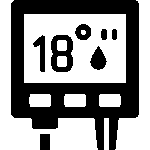Low Voltage GPS Tracker Power Guide: Simple Solutions for Electronics Enthusiasts
When working with GPS trackers in your electronics projects, you may encounter a common issue: the tracker not powering properly due to insufficient voltage. This issue can cause your device to malfunction or fail to operate at all. Don’t worry—this is a problem that can be easily fixed with a few adjustments!
The Problem :
Low voltage occurs when the power supply to the GPS tracker isn’t stable or strong enough to meet the tracker’s requirements. For instance, a typical GPS tracker might need around 5V to operate smoothly, but if you’re using a battery that only provides 3V or 4V, it could cause errors or complete failure.
Example :
Imagine you’re using a small GPS tracker to track the location of a vehicle. You’ve connected the tracker to a 3.7V Li-Po battery, but the GPS module keeps turning off or not providing accurate data. The issue? The power supply is too weak for the tracker’s needs.
The Solution :
To resolve this, consider using a DC-DC boost converter to increase the voltage to the required 5V. This small device can take your 3.7V battery and step it up to a stable 5V output, ensuring that your GPS tracker receives the power it needs.
Sample Calculation :
Let’s say you’re using a 3.7V Li-Po battery that draws 100mA to power your GPS tracker.
If you use a DC-DC boost converter to step up the voltage to 5V, the current requirement on the 5V side will increase.
To understand how much current the boost converter needs to supply at 5V, we can use the power formula:
P=V×IP = V \times IP=V×I
Where:
- P is power (in watts),
- V is voltage (in volts),
- I is current (in amperes).
For the input side (3.7V at 100mA):
P=3.7V×0.1A=0.37W
Now, to maintain the same power on the output side at 5V, the current will increase. Rearranging the formula to solve for current at 5V:
I=VP
Substitute the power (0.37W) and the output voltage (5V):
I=5V0.37W=0.074A (74mA)
So, the boost converter will need to supply 74mA at 5V to maintain the same power. This means the current on the 5V side is lower because of the higher voltage, but the total power remains the same.
Products Suggestion :
If you’re looking for reliable components to fix this, check out the DC-DC Boost Converter or Voltage Regulator ICs available at SmartXProKits.in. Shop now at SmartXProKits.in for high-quality, Made in India components that ensure your projects run smoothly.




















